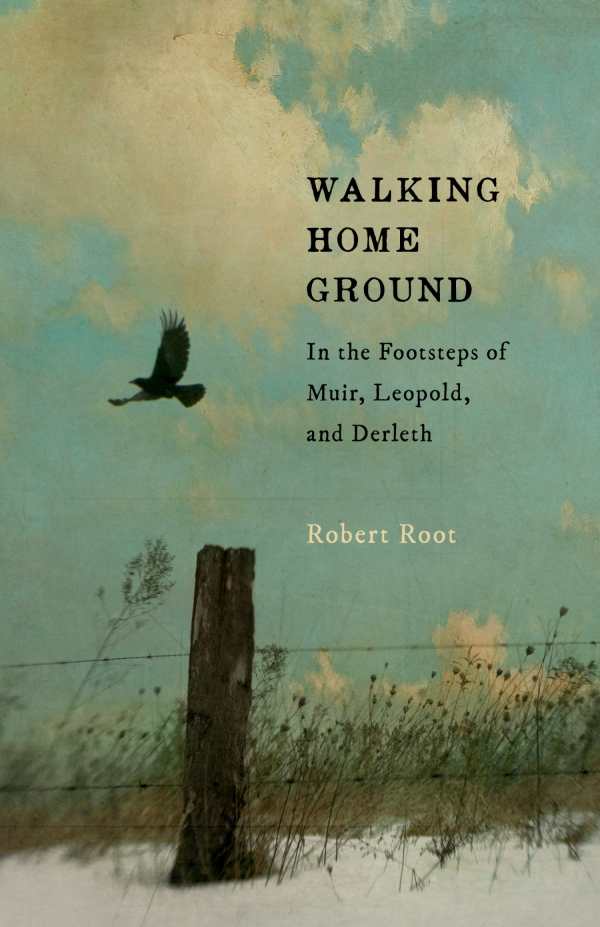Walking Home Ground
In the Footsteps of Muir, Leopold, and Derleth
Root’s celebration of pristine places is a valentine to a small region that inspired giants of conservation.
Though it is not as celebrated as other nature areas, southeastern Wisconsin helped birth a love of the outdoors in important figures like John Muir, Aldo Leopold, and August Derleth. In Walking Home Ground, Robert Root treks in the footsteps of those naturalists, creating a successor volume to their observations about the landscapes of “America’s Dairyland.”
Root divides his book into sections for each naturalist, including excerpts of their own writing about the area to compare their experiences with the land as it exists today. That process starts with Ennis Lake, formerly Fountain Lake, which was carved by Ice Age glaciers; it was also the site where young John Muir’s family built a farm after immigrating from Scotland in the 1840s.
Root consistently quotes Muir’s The Story of My Boyhood and Youth—most poignantly, his writing about the then-plentiful passenger pigeon—and describes how the land has changed since Muir set foot there. The author uses his own boyhood experiences to link himself to Muir, relating to the experiences captured in Muir’s writing.
Walking Home Ground also links the naturalists to one another. For example, Root explains how Leopold was instrumental in getting the state to set aside Muir’s boyhood environs as a state park, providing a natural transition to talking about Leopold’s A Sand County Almanac and visiting the locations that inspired it.
The book later shifts to Derleth-related sites, like the villages of Sauk City and Prairie du Sac, and the Wisconsin River sites that Thoreau-inspired Derleth wrote about in his work Walden West. In all these chapters, Walking Home Ground mixes detailed descriptions with its history lessons.
Root also includes short “interlude” chapters, in which he simply describes his own hikes in the area over a few years, with pieces that read like journal entries along the lines of the three naturalists’ writings.
What emerges is a thorough work of place, a valentine to a small region that inspired such giants of conservation and argues for a greater appreciation of Wisconsin’s pristine spaces and their histories.
Reviewed by
Jeff Fleischer
Disclosure: This article is not an endorsement, but a review. The publisher of this book provided free copies of the book to have their book reviewed by a professional reviewer. No fee was paid by the publisher for this review. Foreword Reviews only recommends books that we love. Foreword Magazine, Inc. is disclosing this in accordance with the Federal Trade Commission’s 16 CFR, Part 255.

